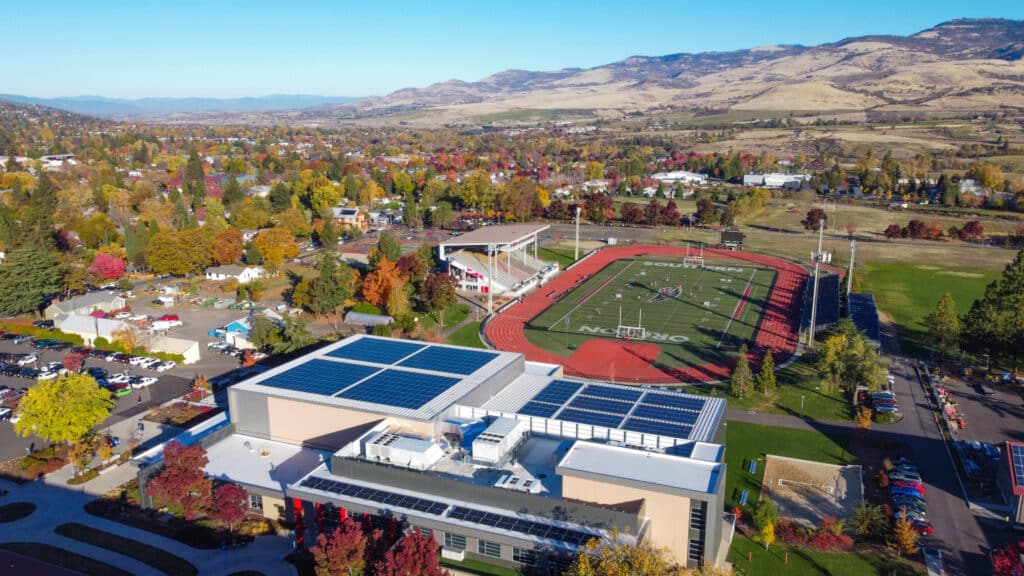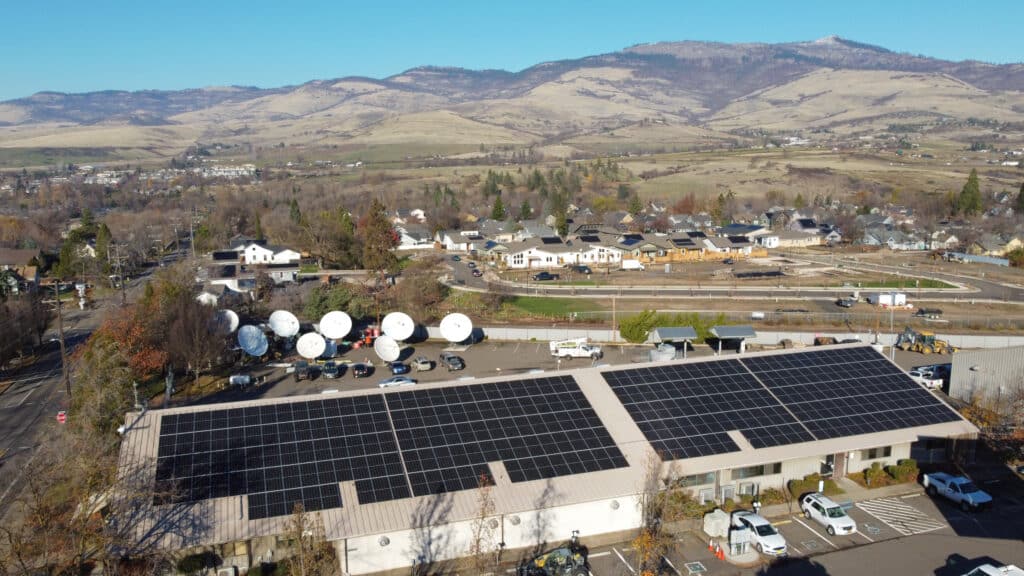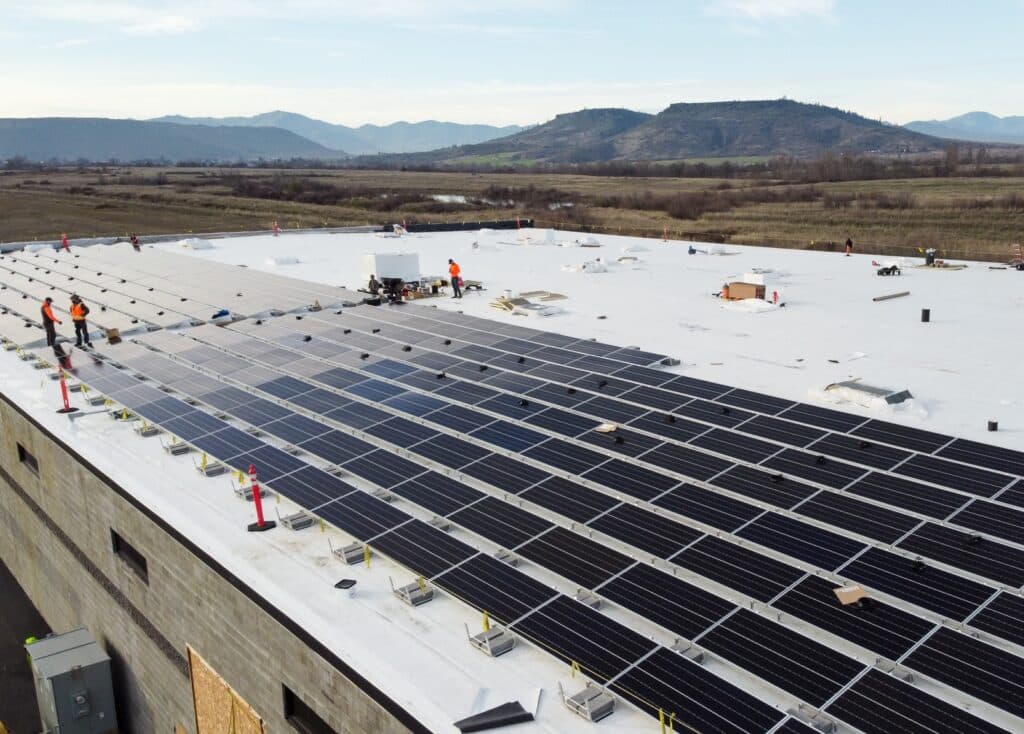For Southern Oregon businesses considering going solar, Safe Harbor provisions for federal Investment Tax credits can be a huge opportunity. In the 15-year history of our company, we’ve seen incentives come and go so much, it feels like our head is on a swivel. That said, the incentives are incredibly important, so we spend a lot of time learning about them and educating our clients about them. With that, we must say: We are not tax experts. Please consult a tax professional if you want to take advantage of any incentives reviewed below.
The Inflation Reduction Act (IRA) has brought transformative changes to how businesses approach renewable energy projects, particularly solar. Businesses are leveraging tax credits of 30 to 50% that are available under specific conditions. This month, the IRS released updated rules and values for the Safe Harbor tables, offering clarity for businesses calculating eligibility for this bonus incentive. Here’s what you need to know.
What Is Safe Harbor?
Safe Harbor is a mechanism designed to provide businesses with clarity and assurance when pursuing renewable energy projects. By adhering to the guidelines outlined in the Safe Harbor tables, businesses can ensure compliance with the IRA’s requirements and qualify for bonus credits. For solar projects, these bonus incentives can make a significant difference in project ROI, further reducing the financial burden of transitioning to renewable energy.
To take advantage of Safe Harbor, you must start construction on a project before any new rule changes are made by the IRS. “Start of construction” can be either a financial or a physical test. The business must conduct “physical work of a significant nature,” or incur at least 5% of the total project cost. When the IRS changes conditions to meet thresholds for an incentive, they usually give businesses 90 days (3 months of safe harbor) to break ground to take advantage of the previous rules.

Threading the Needle
The IRS outlines four key areas of compliance that determine whether businesses are eligible for investment tax credits.
Prevailing Wage: Employers must ensure that workers involved in the project are paid prevailing wages as defined by the Department of Labor. This provision applies during both construction and maintenance phases. Following these guidelines and the Apprenticeship Requirement for solar projects (see below) will potentially make the business eligible for a 30% Investment Tax Credit.
Apprenticeship Requirements: Projects must demonstrate that a certain percentage of total labor hours are performed by qualified apprentices. These guidelines aim to promote workforce development in the renewable energy sector. Following these guidelines and the Prevailing Wage Requirement for solar projects (above) will potentially make the business eligible for a 30% Investment Tax Credit.
Domestic Content: To qualify for a bonus 10% credit (above the 30% described above), a percentage of materials used in the project—such as steel and iron—must be manufactured in the United States. This requirement encourages local sourcing and strengthens the domestic supply chain. The updated rules issued by the IRS on January 16 made pretty big changes to the percentage of domestic content required to meet the threshold for this tax break, mostly giving more weight to domestically-produced solar panels.
Energy Communities: Projects located in designated “energy communities”—areas with high fossil fuel industry employment or significant environmental challenges—are eligible for another additional 10% (again, separate from the incentives above). The updated IRS guidelines now include expanded definitions for these communities, making it easier for businesses to identify qualifying locations. Jackson County, Oregon is considered an Energy Community.
If your business can document adherence to these 4 categories, your solar project could be eligible for a 50% Investment Tax Credit. This is great news, but you should proceed with caution and work with a tax professional to ensure that proper documentation is maintained to ensure compliance. True South Solar can help you select a product mix that will qualify for the 10% domestic content bonus. We can also provide documentation for the prevailing wage and apprenticeship labor requirements.

Key Updates in the New IRS Rules
The IRS’s recent updates provide more detailed guidance on the following:
Clarified Thresholds: Each of the four Safe Harbor categories now includes updated thresholds and definitions, making it easier for businesses to calculate compliance and eligibility.
Simplified Documentation Requirements: Businesses are now required to provide specific types of documentation, such as payroll records and material sourcing certificates, to demonstrate compliance with the prevailing wage and domestic content requirements.
Extended Deadlines: For certain projects delayed by supply chain disruptions, the IRS has extended the deadline for meeting Safe Harbor criteria, offering more flexibility to businesses.
Why These Updates Matter for Solar Projects
For businesses planning solar installations, the additional tax credits can make projects even more cost-effective. By leveraging the Safe Harbor provisions, businesses not only reduce their tax burden but also contribute to a more sustainable energy future. However, navigating these requirements can be complex, and the IRS’s updated guidelines are a timely resource to help businesses maximize their benefits.
How True South Solar Can Help
At True South Solar, we specialize in guiding businesses through the process of transitioning to solar energy. Our team stays informed about the latest developments in tax incentives and regulatory updates, including the IRA and Safe Harbor provisions. From design and installation to documentation and compliance, we’re here to ensure your solar project is both successful and financially rewarding.
By understanding the updated Safe Harbor rules, your business can confidently move forward with a solar project that takes full advantage of the Inflation Reduction Act’s incentives. For more insights and guidance, check out our Commercial Solar Statement of Qualifications to learn about how other businesses in Southern Oregon are using solar energy to cut costs and become more independent.
Contact us today to start your journey toward sustainable energy independence!

